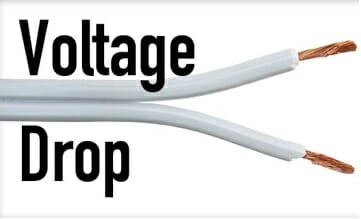How relevant it is in solar systems?
Voltage drop is a critical aspect that you need to consider while implementing a solar electricity system.
We are going to understand how much impact a voltage drop has, how it is calculated and how it is eliminated in a solar electricity system?
Every body is looking only for the “best solar panels”.
Most of them are not even considering other major factors like the features and efficiency of the “solar pcu”.
And, none of them are concerned about the “cables” used for the interconnection.
But, the fact is that, the cable size is also very much important.
Seriously, It can bring you loss in production and can ruin your pocket. Let us see how it is…

Voltage Drop Calculation Method
There are three methods to calculate the voltage drop
1. Approximate Method
2. Exact Method
Both of these methods uses complex formula.
Therefore, we are going to adopt the 3rd method.
That is, using an android application
3. Voltage Drop Calculator
We need certain parameters, as you can see in the “App” window.
Considering the conditions in the “Figure – 1”
Wire Type = Copper
Wire diameter size = SQmm
Cross sectional area = 4 (SQ mm(Refer Figure – 1))
Wire Length = 35 Mtr
Current Type = AC
Phase = 1
Voltage = 220 V (Average EB Voltage)
Current = ?
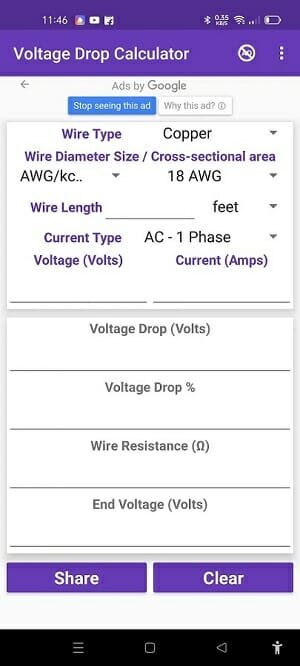
Finding Out The Current…
To get the value, we have to refer the datasheet of the solar PCU. Below is the specification sheet of DELTA 5KW Solar PCU
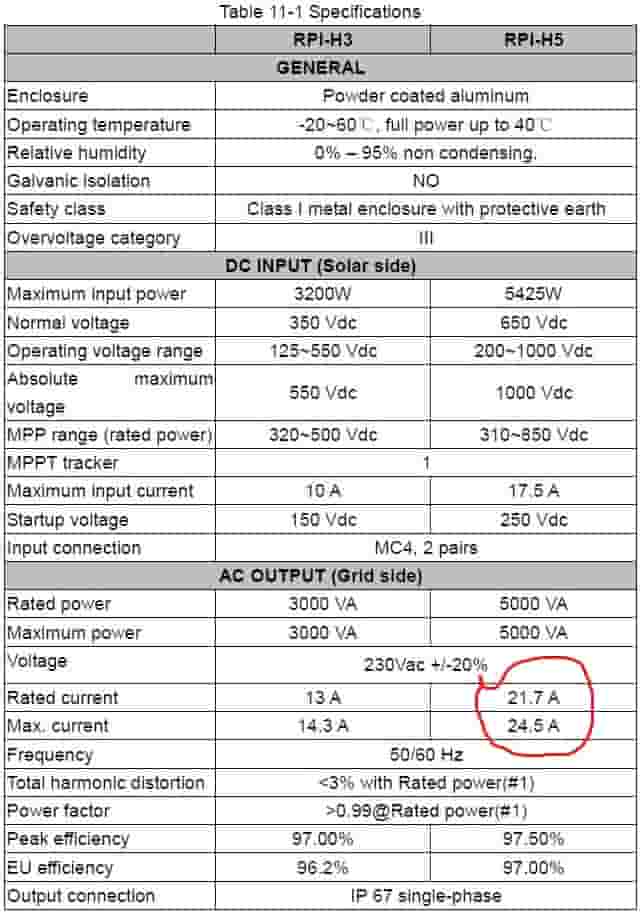
You can see “Rated Current” and “Max. Current”.
We are considering the “Rated Current’ which is 21.7 A.
Applying the values…
Let us see, what is the outcome?
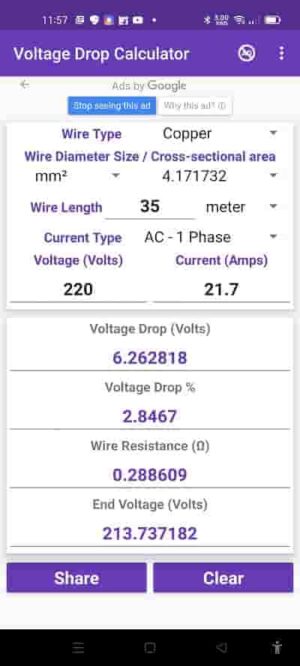
Analyzing the result…
You can see here that, the end voltage has been dropped to 213.73 Volts from 220
Volts.
Now, we will see how this impacts our export and how much loss it can bring.
Calculations are as follows…
Voltage drop = 6.26 V
Power loss = V x I = 6.26 X 21.7 = 135.84 Watts
Calculating the time taken for 1 Unit (kWhr), loss
Applying formula; Power x Time in Hours / 1000 = Units
Power x T / 1000 = 1
T = 1000 / Power = 1000 / 135.84 = 7.5 Hrs
Which means that. per day loss will be approximately 1 Unit (Considering that average
production hours is only 7.5 Hrs)
Now, escalating the value to 30days; 1 x 30 = 30 Units in a 30 Days Span
and, Hmmm… Yearly; 30 x 12 = 360 Units
Calculating the loss per year (In terms of cash);
Consider the average price per unit as INR.8/-
Therefore, the net loss per year in terms of cash = 360 x 8 = INR.2880.00
See the loss incurred per year, just because of discarding the wire size.
If you calculate till the life span of the panels, i.e. 25 years, the loss will be 25 x 2880 =
INR.72000/-
Huge loss, Isn’t.
How to overcome the loss…
To overcome this loss, we need to either reduce the cable length or use a cable with higher cross section. In the next step, we will see what will happen, if we change the wire size from 4SQmm to 10 SQmm.
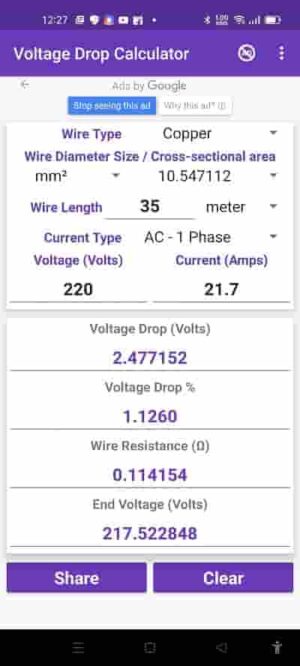
You can see here that, the end voltage has been dropped to 217.52 Volts from 220
Volts.
Now, we will see how this impacts our export and how much loss it can bring.
Calculations are as follows…
Voltage drop = 2.48 V
Power loss = 2.48 x 21.7 = 53.86 Watts
Calculating the time taken for 1 Unit (kWhr), loss
Applying formula; Power x Time in Hours / 1000 = Units
Power x T / 1000 = 1
T = 1000 / Power = 1000 / 53.86 = 18.6 Hrs
Which means that. per day loss will be approximately 0.5 Unit (Considering that average
production hours is only 7.5 Hrs)
Now, escalating the value to 30days; 0.5 x 30 = 15 Units in a 30 Days Span
and, Yearly; 15 x 12 = 180 Units
Calculating the loss per year (In terms of cash);
Consider the average price per unit as INR.8/-
Therefore, the net loss per year in terms of cash = 180 x 8 = INR.1440.00
See the loss has been reduced to INR.1440/– from INR.2880/-
Would you like to engage with us? Please Click Here…
Conclusion…
We found that we can decrease the loss by using cables with correct cross section and
by reducing the length between the solar pcu and the syncing point. But, keep in mind
that, the production will be compromised if the DC cable length is also not limited.
Also, the DC cable size has to be correct. That means, either of the sides of the solar PCU
(DC and AC side) has to be setup perfectly.

